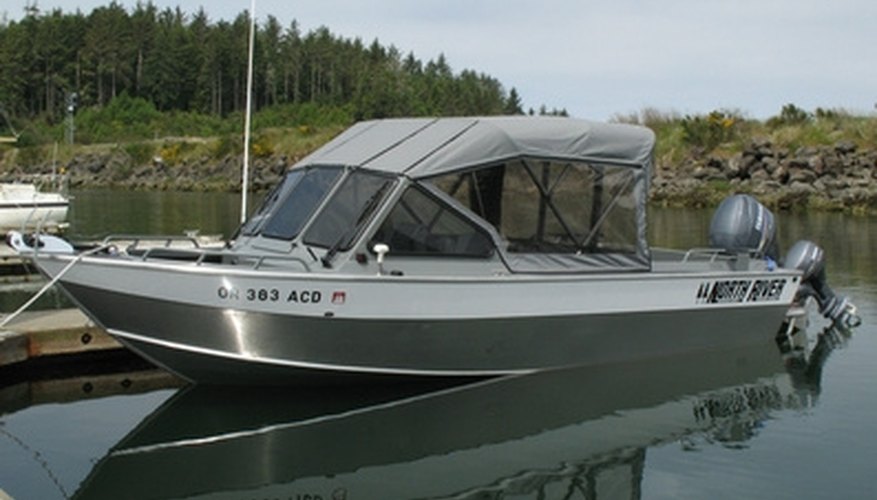
Lowrance has made sonar electronics for fishermen and recreational boaters since 1957. Sonar or 'SOund', 'NAvigation' and 'Ranging' technology was developed during WWII. Lowrance manufactures high-definition, full-sized, compact and portable Sonar units, also called depth finders and fish finders. The company also has a model that is designed exclusively for the needs of ice fishermen. But regardless of model, Lowrance provides standard troubleshooting guidelines for owners to fix minor problems.
Items you will need
Adjustable wrench
Flat-head screwdriver
Phillips-head screwdriver
Power, Noise, Wires
Check the power cable connection and the wiring if the unit doesn't power-on. Make sure the red power wire is connected to the positive battery terminal, and the black is connected to negative terminal. Also check the fuse for proper installation and condition. If a power problem persists measure the voltage at the power connector to ensure an output of at least 10 volts. If voltage is low check for corroded terminals or wiring and recharge the battery.
Reroute the unit's wiring away from other electrical wires to solve freezes or erratic operation. Check to see if noise from the boat's main motor, trolling motor or an accessory is causing interference. Routing the power cable directly to a battery instead of through an ignition switch or fuse block can also solve operational problems. The transducer is typically mounted on the hull of a boat but some units are mounted inside the hull. Check the transducer cable for damaged wires, and make sure the transducer's power connector is plugged-in securely.
Fix a weak bottom echo---the return sonar signal received by the transducer---by ensuring that the transducer is pointing straight down. Oil, dirt and other substances that form on the transducer can also cause malfunctions and must be removed.
Check that transducers mounted inside the boat's hull are 'shooting' through only one layer of fiberglass and mounted securely. Also check to make sure the correct depth range is set, avoid turbulent water, set a higher sensitive level on the display and use the zoom feature. Moving the boat at a slow trolling speed will also improve echo returns and display readings.
Turn off all electrical equipment and motors while the boat is immobile to fix noise in the depthfinder signal. Electrical noise causes the display to show random dots and lines. To check for electrical noise turn off all electrical equipment and motors while the boat is immobile. With the unit turned on, turn off the Noise Reject feature and set the sensitivity range at 90 to 95 percent. Then turn on each motor and electrical component one-by-one until the problem is found. Wires causing interference can be rerouted. If the boat's motor causes noise on the display check the spark plugs and the alternator. Try resistor spark plugs or alternator filters if you find a problem.
Tips
- Remember, if your unit isn't displaying fish icons or arcs, there may not be any fish.
References
Tips
- Remember, if your unit isn't displaying fish icons or arcs, there may not be any fish.
Writer Bio
Matt Zeigler began writing professionally in 1991. In addition to newspapers in southeast Alabama, his work has appeared in "The Kansas City Star" and the Little League World Series game program. He earned a Bachelor of Science in journalism from Troy University.



